Are you looking for the most beautiful plants for the house?
Perhaps you want to decorate your conservatory, patio, or balcony too. It’s incredible how different some plants look in the living room compared to their home ground. We’ve put together this complete guide to help you choose the best-potted perennials. Once you start planting them, you’ll never look back.
Read on to learn about the six best perennial flowers for pots.
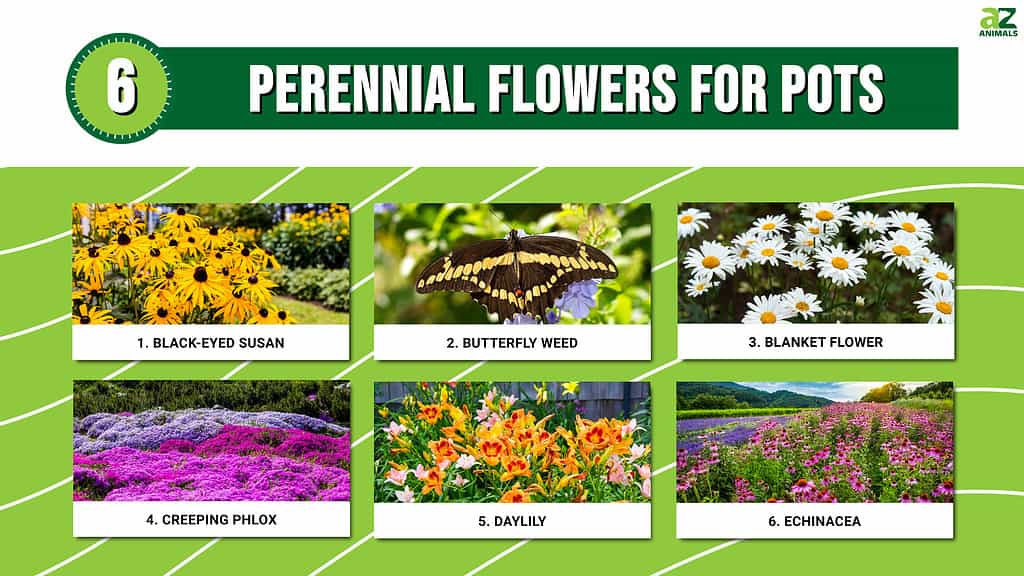
1. Black-Eyed Susan (Rudbeckia hirta)
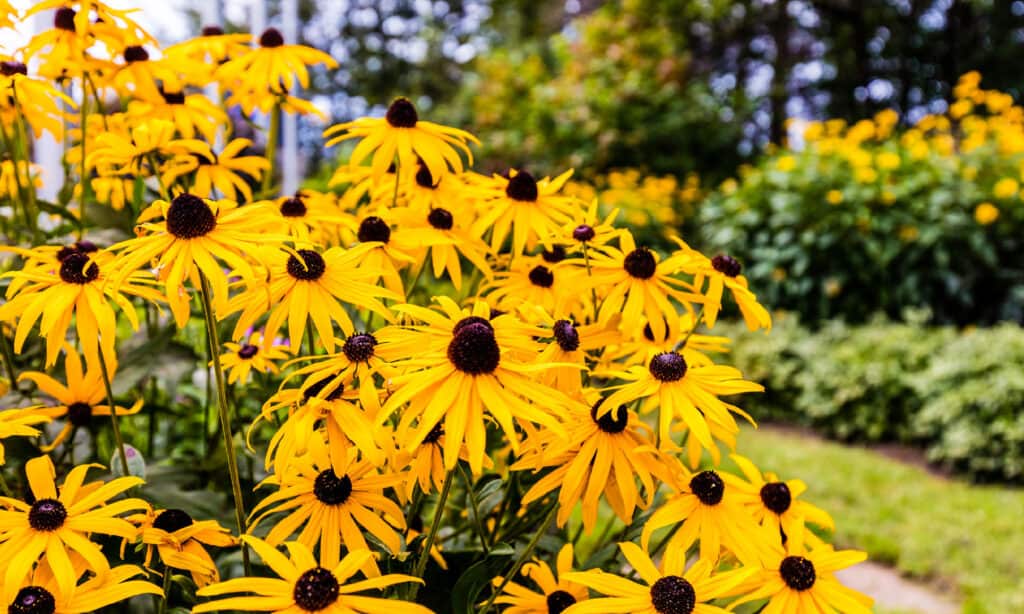
The black-eyed susan is a perennial, low-maintenance flower.
©iStock.com/Dopeyden
When you’re looking for a low-maintenance plant that’s also stunning, black-eyed susan is the right choice. This plant only requires partial shade and has medium watering needs. The nutrient needs are also low, so you won’t have to fertilize these perennials much.
Family: Asteraceae
Native Habitat: North America
Flowering Time: Late spring to early fall
Propagation: By seed, division, or cuttings
Pests and Diseases: Powdery mildew, rust, leaf spot, and Japanese beetle infestation are all common problems.
Ways to Display the Plant: In mass plantings, as an edging plant, or in pots.
2. Butterfly Weed (Asclepias tuberosa)
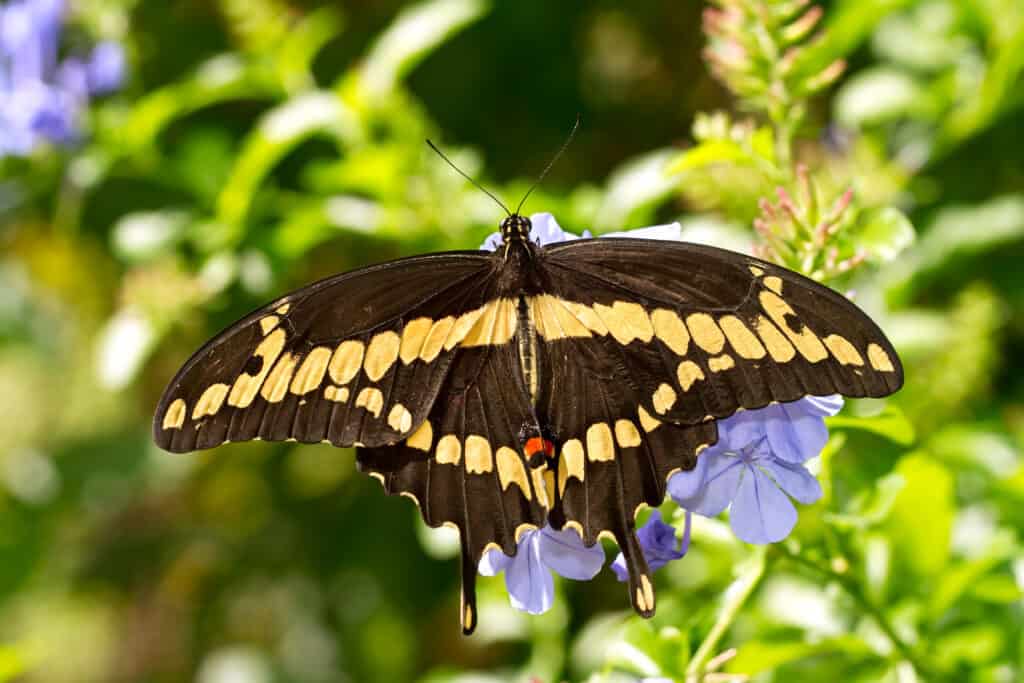
Butterfly weed attracts all sorts of
butterflies
and is easy to care for.
©Lorraine Hudgins/Shutterstock.com
Take advantage of a full sun variety that attracts gorgeous monarch butterflies! This is one of the best perennial flowers for pots because it’s easy to care for and gorgeous.
Family: Asclepiadaceae
Native Habitat: North America
Flowering Time: Early summer
Directions for Care: During the summer, keep the soil moist but not soggy. Water less frequently in fall and winter. Fertilize with a low-nitrogen fertilizer.
Propagation: By seed or cuttings
Pests and Diseases: Susceptible to aphids, spider mites, whiteflies, and mealybugs. Use special oils to protect the plant’s stem from pests.
Ways to Display the Plant: You’ll love potting this perennial if you like large plants. Butterfly weed can spruce up any home or garden, whether you use it in large or small pots.
3. Blanket Flower (Gaillardia pinnatifid)

Blanket flowers look a lot like daisies.
©Smyshliaeva Oksana/Shutterstock.com
Refreshing and cute, blanket flowers are mound/clump-forming perennials with a wide spread. While they look great on the ground, they also make for playful potted plants.
Location Requirements: Full sun
Watering Needs: Medium
Needs for Nutrients: Medium
Family: Asteraceae
Native Habitat: North America
Flowering Time: Early fall
Directions for Care: Blanketflowers are heat- and drought-tolerant, making them ideal for growing in pots. They prefer well-drained soil and should be watered regularly.
Propagation: Blanketflowers can be easily propagated by seed. Sow the seeds indoors in late winter or early spring, then transplant the seedlings outside after the last frost date.
Pests and Diseases: Powdery mildew is one of the biggest problems with blanket flowers. To prevent powdery mildew, water the plants at the base.
Ways to Display the Plant: Borders, cottage style pots, rock gardens with pots, wildflower pots, mass plantings, as an edging plant, or in containers
4. Creeping Phlox (Phlox subulata)
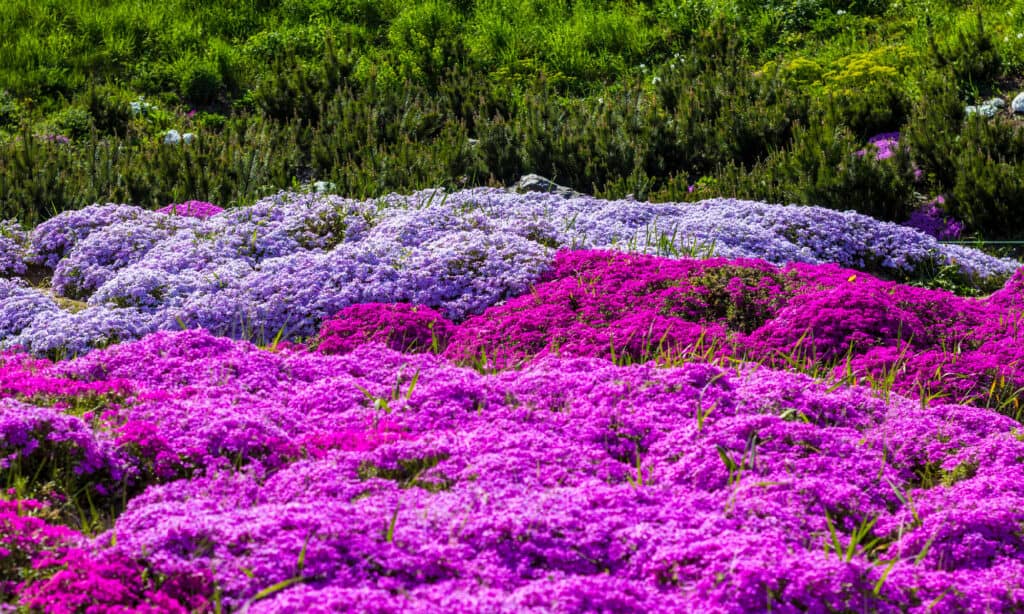
The creeping phlox can survive on very little water.
©iStock.com/MaYcaL
Don’t forget about vine varieties when you’re looking for the best perennial flowers for pots. You can enjoy a climbing vine type of perennial, the creeping phlox.
Location Requirements: Partial shade
Watering Needs: Low to medium
Needs for Nutrients: Low
Family: Polemoniaceae
Native Habitat: North America
Flowering Time: Late spring
Directions for Care: One of the special things about creeping phlox is that it can survive on very little water, making it ideal for growing in pots.
Propagation: The most popular method is stem cuttings taken in late spring or early summer.
Pests and Diseases: Creeping phlox is generally resistant to most pests and diseases. However, you have to watch out for aphids and leaf spots.
Ways to Display the Plant: Porch plant
5. Daylily (Hemerocallis spp.)
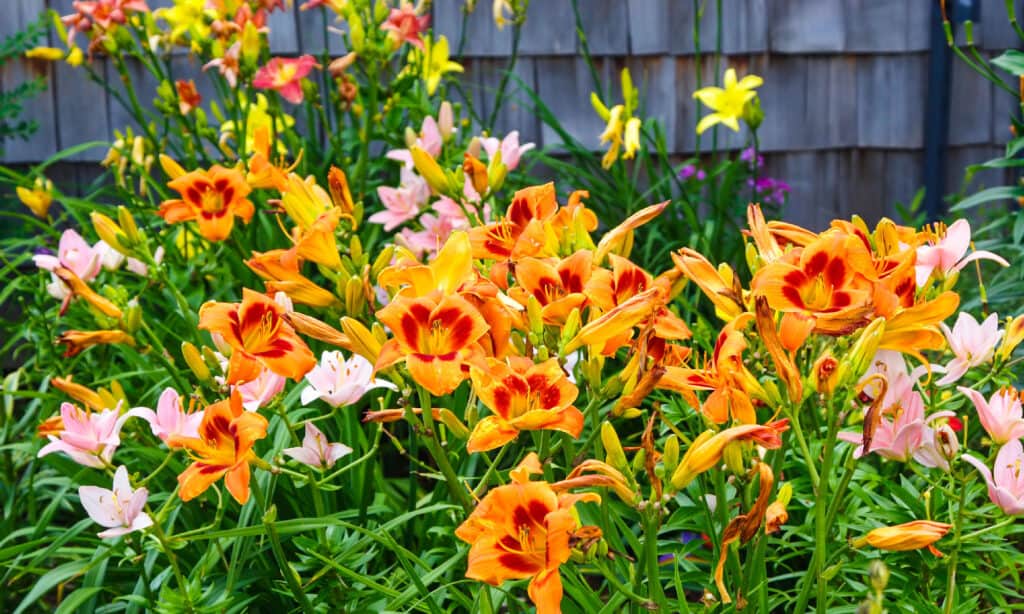
Daylilies are easy to propagate.
©iStock.com/onepony
When you start planting daylilies, you’ll know you’re a professional perennial lover. This flower is a fan favorite, and for good reason. It’s hardy, lovely, and easy to propagate.
Location Requirements: Medium sun
Watering Needs: Low to medium
Needs for Nutrients: Low to medium
Family: Hemerocallidaceae
Native Habitat: Asia
Flowering Time: Late spring to early summer
Directions for Care: Daylilies are definitely one of the best perennial flowers for pots, they’re so easy to care for. They prefer well-drained soil and should be watered regularly.
Propagation: By division or by seed
Pests and Diseases: Slugs, snails, vine weevil, Japanese beetle, rust, daylily leaf streak virus, and daylily mosaic virus are all common problems.
Ways to Display the Plant: Try growing them in a hanging basket.
6. Echinacea (Echinacea purpurea)
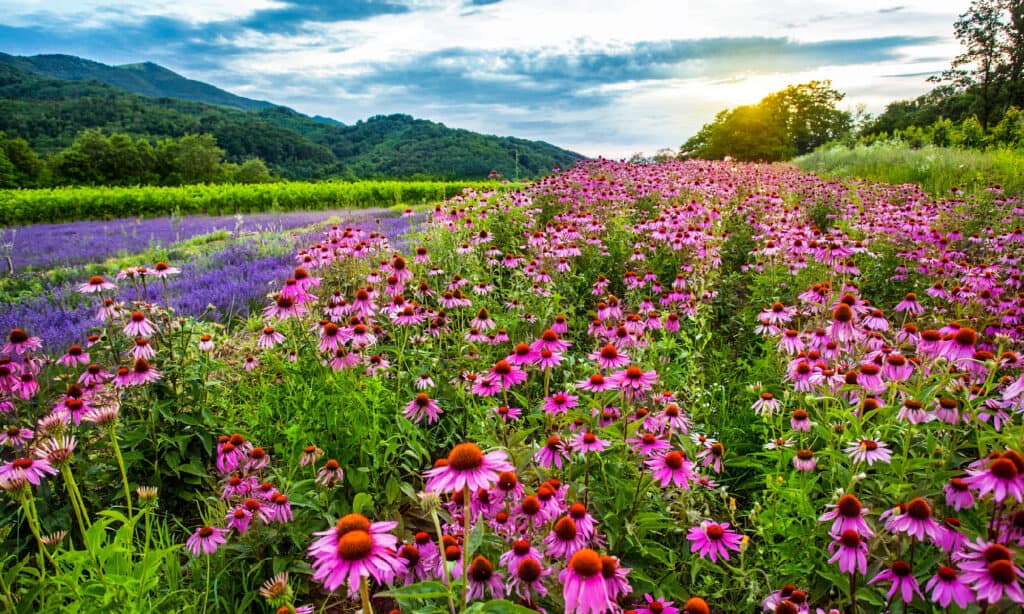
Echinacea is a holistic species that can help boost immune system functions.
©iStock.com/Jasmina81
Beauty isn’t the only thing perennials have to offer; they can also be medicinal. Echinacea is a special holistic species that can help boost immune system functions.
Location Requirements: Partial sun
Watering Needs: Medium to high
Needs for Nutrients: Low to medium
Family: Asteraceae
Native Habitat: North America
Flowering Time: Late spring to early summer
Directions for Care: Did you know that echinacea is also known as the “coneflower”? Echinacea is a beautiful flower that is easy to care for. It prefers well-drained soil.
Propagation: By seed
Pests and Diseases: Aphids are one of the biggest threats to echinacea. They can cause the plant to become stunted and yellow. To prevent aphids, water the base of the plant and make sure the leaves are dry.
Ways to Display the Plant: Echinacea is often used to contrast brighter colors. It’s one of the best perennial flowers for pots if you’re looking for a garden border.
Understanding Water Needs
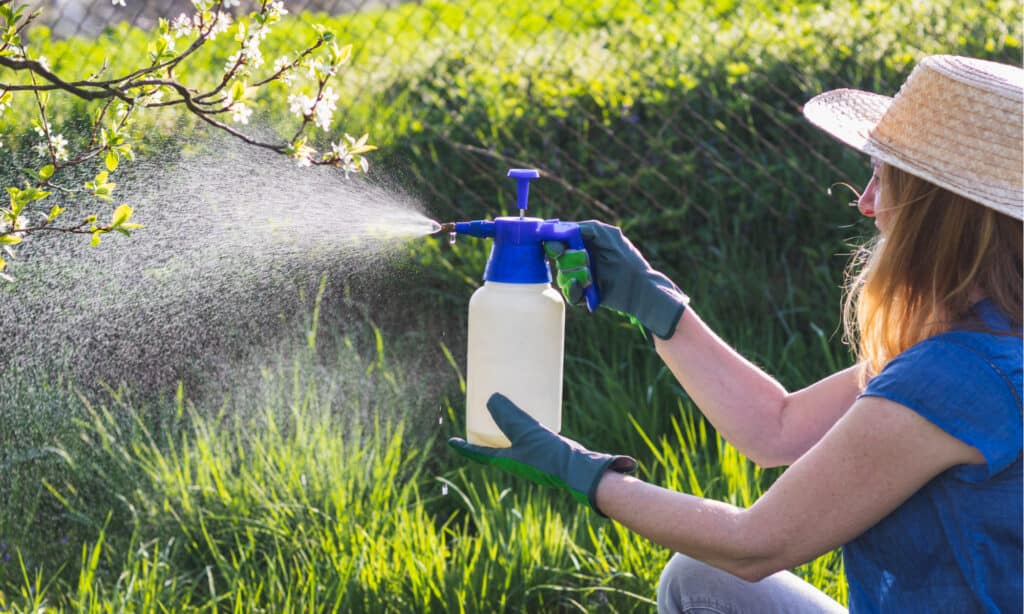
Perennials have specific watering needs. Potted perennials require moist soil.
©encierro/Shutterstock.com
What are the water needs for the best perennial flowers for pots? Potted perennials that have high watering needs should always be moist. Don’t let the root ball dry out for plants with high moisture needs.
Do you live somewhere it rains a lot? Wild perennials will likely have high watering needs compared to other varieties. Pro tip; if you’re picking rare perennials in the wild to pot indoors, be conservative to encourage the spread of native plants.
Understanding Nutrient Needs
When you’re exploring the best perennial flowers for pots, you’ll need to take note of their nutrient needs. During its period of growth, feed high-need plants once a week with a diluted mixture. If your perennials have an average or medium need for nutrients, feed them every two weeks. Certain species will require even less feeding.
Summary of 6 Perennial Flowers for Pots
Here’s a recap of the six perennial flowers we looked at that are suitable for growing in pots.
| Number | Perennial Flowers | Scientific Name | Flowering Time |
|---|---|---|---|
| 1 | Black-Eyed Susan | Rudbeckia hirta | Late spring to early fall |
| 2 | Butterfly Weed | Asclepias tuberosa | Early summer |
| 3 | Blanket Flower | Gaillardia pinnatifid | Early fall |
| 4 | Creeping Phlox | Phlox subulata | Late spring |
| 5 | Daylily | Hemerocallis spp. | Late spring to early summer |
| 6 | Echinacea | Echinacea purpure | Late spring to early summer |
The photo featured at the top of this post is © iStock.com/Jasmina81
Sources
- Site Editor, Available here: https://www.midwestgardentips.com/container-perennials
- Company writer, Available here: https://hayloft.co.uk/top10perennialsforpots
Thank you for reading! Have some feedback for us? Contact the AZ Animals editorial team.






